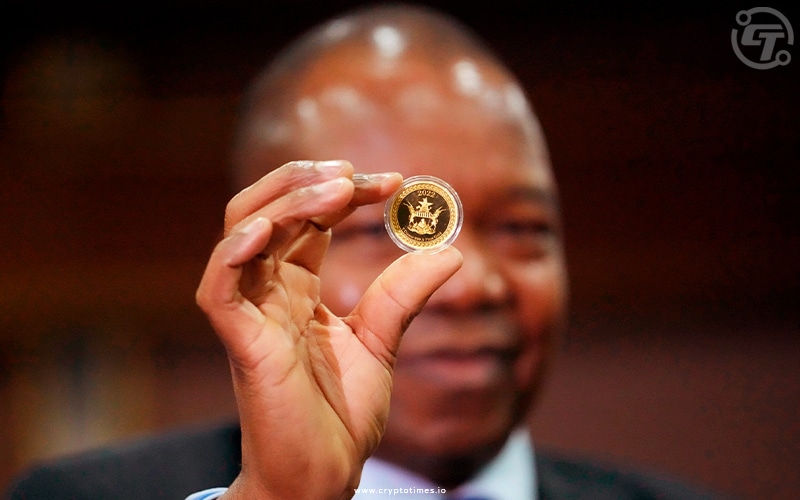Despite a warning from the International Monetary Fund (IMF), the Reserve Bank of Zimbabwe has successfully sold 14 billion Zimbabwean dollars’ worth of gold-backed digital tokens, equivalent to approximately $39 million. The central bank announced that it received 135 applications, totaling 14.07 billion Zimbabwean dollars, for the purchase of the gold-backed cryptocurrency.
The newly introduced crypto tokens, backed by 139.57 kilograms of gold, were available for purchase from May 8 to May 12. The minimum prices for individuals and corporations were set at $10 and $5,000, respectively, with a minimum vesting period of 180 days. These tokens can be stored on e-gold cards or in electronic gold wallets.
This move by the Reserve Bank of Zimbabwe is aimed at stabilizing the country’s economy and countering the ongoing depreciation of the local currency against the US dollar. According to XE.com, the official exchange rate for the Zimbabwean dollar is 362 ZWD to USD, while actual exchange rates are substantially higher.
The success of this initial sale has prompted the central bank to announce a second round of digital token sales. Applications are requested to be submitted this week for settlement by May 18. Dr. John Mangudya, the Governor of the Reserve Bank of Zimbabwe, emphasize on local channel that, the issuance of gold-backed digital tokens aims to expand the available value-preserving instruments in the economy and enhance the public’s access to and use of investment products by increasing their divisibility.
However, the IMF expressed caution regarding Zimbabwe’s plan for a gold-backed currency, suggesting that the nation should instead focus on liberalizing its foreign exchange market.
The IMF spokesperson has highlighted in the Bloomberg report the need for a thorough assessment of the potential risks and costs associated with the measure, including macroeconomic and financial stability risks, legal and operational risks, governance risks, and the cost of forgone foreign exchange reserves.
For more than ten years, Zimbabwe has struggled with inflation and fluctuating currency. After a period of hyperinflation during which the local currency was worthless, the nation switched to using the US dollar as its official currency in 2009. The Zimbabwean dollar was reintroduced in 2019 to revive the local economy but has faced ongoing volatility ever since.






